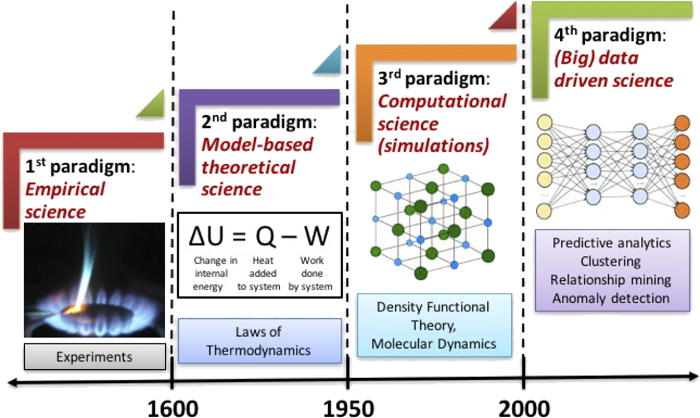Denoising Diffusion Probabilistic Models#
Prerequisite
Markov chain: The future state only depends on current state and not on the sequence of states that preceded it:
The Forward Diffusion Process: Adding Noise
The forward process or diffusion process is a predefined Markov chain that gradually adds Gaussian noise to the data sample \(x_i\) from a real distribution \(q(x_i)\). And this process happens with \(T\) time steps by sequence, where at each time step \(t\) \((t\in T)\), it gradually adds noise to the data in the opposite direction of sampling until signal is destroyed based on previous step \(x_{t-1}\) to produce \(x_t\)
The transition probability distribution at each step t is defined as:
Where:
\(\beta_t\) is a small positive constant that determines the variance of the Gaussian noise added at timestep t. \(\beta_t\mathbf{I}\) denotes the variance.
\(\beta_t\) values is defined as a variance schedule \((\beta_0, \beta_1,...,\beta_t)\), which can be linear, quadratic, cosine, or other functions, usually increasing with t.
[!NOTE]
Question: \(\sqrt{1-\beta_t}x_{t-1}\) is the mean value of the distribution, why not adding noise like: \(x_t=x_{t−1}+\epsilon_t\) where \(\epsilon_t ~\mathcal{N}(0,\beta_tI)\)?
If we directly adding noise, the variance will be \(\text{Var}(x_{t-1})+\beta_tI\). If we start with \(x_0\), the after T steps, the variance of \(x_t\) will be \(\text{Var}(x_t)= \text{Var}(x_{t-1})+\sum_{i=1}^{T}\beta_i\), it is accumulated and grow uncontrollably. That’s why we should we a scaled noise term \(\sqrt{1-\beta_t}\) (since \(\beta_t\) is a small positive value, typically between 0 and 1), which slightly “shrinking” the signal from the previous timestep before adding new noise.
The feature of this diffusion process is that, it can sample \(x_t\) from distribution \(q(x_t|x_0)\) at any arbitrary timestep t in closed form, this is achieved by a reparameterization trick:
Where:
\(a_t=1-\beta_t\)
\(\bar{a_t}=\prod_{s=1}^ta_s\)
The Reverse Diffusion Process: Denoising and Generation
The goal of a diffusion model is to learn the reverse diffusion process, which transforms the noisy data at timestep \(T\) (which is approximately pure noise) back into a clean data sample from the original distribution \(q(x_0)\).
Assume we start from \(p(\textbf{x}_T)=\mathcal{N}(\textbf{x}_T;0;\mathbf{I})\):
Unlike the forward process, the true reverse transition probability \(q(\textbf{x}_{t−1}|\textbf{x}_t)\) is generally intractable because it requires knowing the distribution of all possible data points. However, it can be shown that if the forward diffusion steps are small enough \((\beta_t)\), the reverse transition probabilities are also approximately Gaussian and the distribution can be tractable when conditioned on \(x_0\):
According to Bayes rule:
Due to the Markovian nature of the forward process, \(q(x_t|x_{t-1},x_0)=q(x_t|x_{t-1})\)
\(q(x_t|x_{t-1})=\mathcal{N}(x_t;\sqrt{1-\beta_t}\,x_{t-1},\beta_tI)\)
\(q(x_{t-1}|x_0)=\mathcal{N}(x_{t-1};\sqrt{\bar{a}_{t-1}}\,x_0),(1-\bar{a}_{t-1})I\)
\(q(x_t|x_0)=\mathcal{N}(x_t;\sqrt{\bar{a}_t}x_0,(1-\bar{a}_t)I)\)
For a multivariate Gaussian \(\mathcal{N}(x;\mu;\Sigma)\), the PDF is proportional to \(\exp{(-\frac{1}{2}(x-\mu)^T\Sigma^{-1}(x - \mu))}\)
So, the exponent \(E_1=-\frac{1}{2\beta_t}||(x_t-\sqrt{1-\beta_t}\,x_{t-1})||^2\), \(E_2=-\frac{1}{2(1-\bar{a}_{t-1})}||(x_{t-1}-\sqrt{\bar{a}_{t-1}}\,x_0)||^2\), \(E_3=-\frac{1}{2(1-\bar{a}_t)}||(x_t-\sqrt{\bar{a}_t}x_0)||^2\)
So, the exponent of \(q(x_{t−1}∣x_t,x_0)\) is \(E_1+E_2-E_3\), and we need to decompose and separate the quadric terms (e.g. \(-\frac{1}{2}x_{t-1}^T\Sigma^{-1}x_{t-1}\)) and the linear terms \(x_{t-1}^T\Sigma^{-1}\mu\).
Where:
\(\tilde \mu_t= \frac{\sqrt{\bar{a}_{t-1}}\beta_t}{1-\bar{a}_{t}}x_0+\frac{\sqrt{\bar{a}_t}(1-\bar{a}_{t-1})}{\bar{a}_{t-1}}x_t\)
\(\tilde \beta_t=\frac{1-\bar{a}_{t-1}}{1-\bar{a}_{t}}\beta_t\)
Training Objective: Learning the Reverse Process
The goal of training is to learn the parameters \(\theta\) of the neural network \(\epsilon_\theta\) such that the learned reverse distribution \(p_\theta\) is as close as possible to the true reverse distribution \(q\). This is typically achieved by maximizing the variational lower bound (VLB) on the marginal likelihood of the data \(q(x_0)\).
Training is performed by optimizing the usual variational bound on negative log likelihood:
Recall that we can get \(p(\textbf{x}_{t-1}|\textbf{x}_t)\) tractable by condition on \(x_o\).
\(p(x_{t-1}|x_t,x_0)=\frac{p(x_{t}|x_{t-1},x_0)\cdot p(x_{t-1},x_0)}{p(x_t,x_0)}\rightarrow q(x_{t}|x_{t-1})=\frac{q(x_{t-1}|x_t,x_0)\cdot q(x_t,x_0)}{q(x_{t-1},x_0)}\)
\(L=\mathbb{E}_q[-\log{p(\textbf{x}_T)}-\sum_{t=1}^T\log\frac{p_\theta(\textbf{x}_{t-1}|\textbf{x}_{t})}{q(\textbf{x}_t|\textbf{x}_{t-1})}]=\mathbb{E}_q[-\log{p_{\theta}(\textbf{x}_T)}-\sum_{t>1}^T\log\frac{p_\theta(\textbf{x}_{t-1}|\textbf{x}_{t})\cdot q(\textbf{x}_{t-1}|\textbf{x}_0)}{q(\textbf{x}_{t-1}|\textbf{x}_{t},\textbf{x}_0)\cdot q(\textbf{x}_t|\textbf{x}_0)}-\log{\frac{p_\theta(\textbf{x}_0|\textbf{x}_1)}{q(\textbf{x}_1|\textbf{x}_0)}}]\)
\(L=\mathbb{E}_q[-\log{p_\theta(\textbf{x}_T)}+\log{q(\textbf{x}_T|\textbf{x}_0)}-\sum_{t>1}^T\log\frac{p_\theta(\textbf{x}_{t-1}|\textbf{x}_{t})}{q(\textbf{x}_{t-1}|\textbf{x}_{t},\textbf{x}_0)}-\log{\frac{p_\theta(\textbf{x}_0|\textbf{x}_1)}{q(\textbf{x}_1|\textbf{x}_0)}}]\\=\mathbb{E}_q[-\log{p_\theta(\textbf{x}_T)}+\log{q(\textbf{x}_T|\textbf{x}_0)}-\sum_{t>1}^T\log\frac{p_\theta(\textbf{x}_{t-1}|\textbf{x}_{t})}{q(\textbf{x}_{t-1}|\textbf{x}_{t},\textbf{x}_0)}-\log{\frac{p_\theta(\textbf{x}_0|\textbf{x}_1)}{q(\textbf{x}_1|\textbf{x}_0)}}]\)
The term \(\log \frac{p_\theta(\mathbf{x}_0|\mathbf{x}_1)}{q(\mathbf{x}_1|\mathbf{x}_0)}\) is isolated from the summation.
This is often done because this first transition (\(\mathbf{x}_0 \leftrightarrow \mathbf{x}_1\)) needs to be handled carefully—especially if we’re conditioning on the observed data \(\mathbf{x}_0\), which introduces asymmetry.
